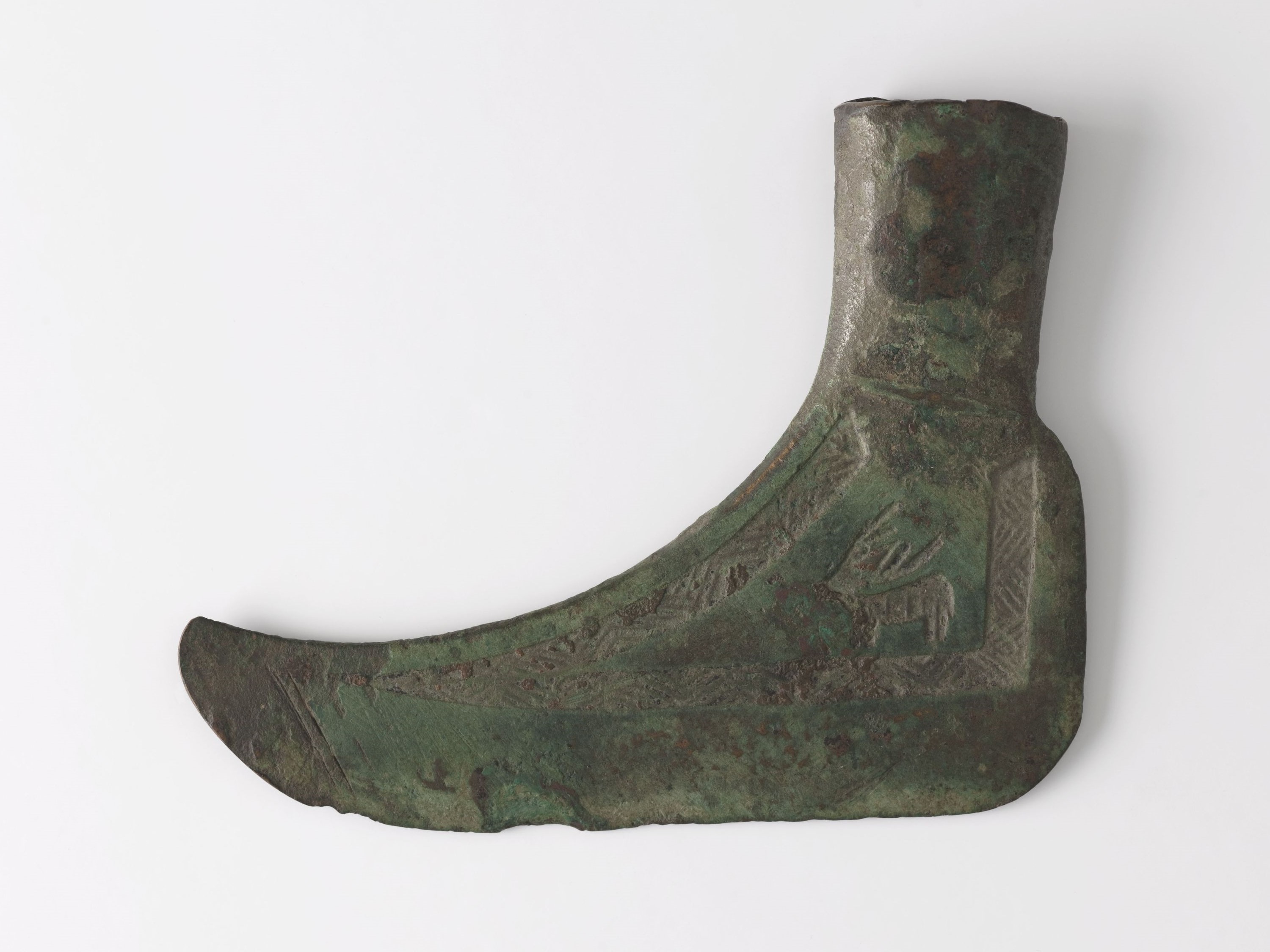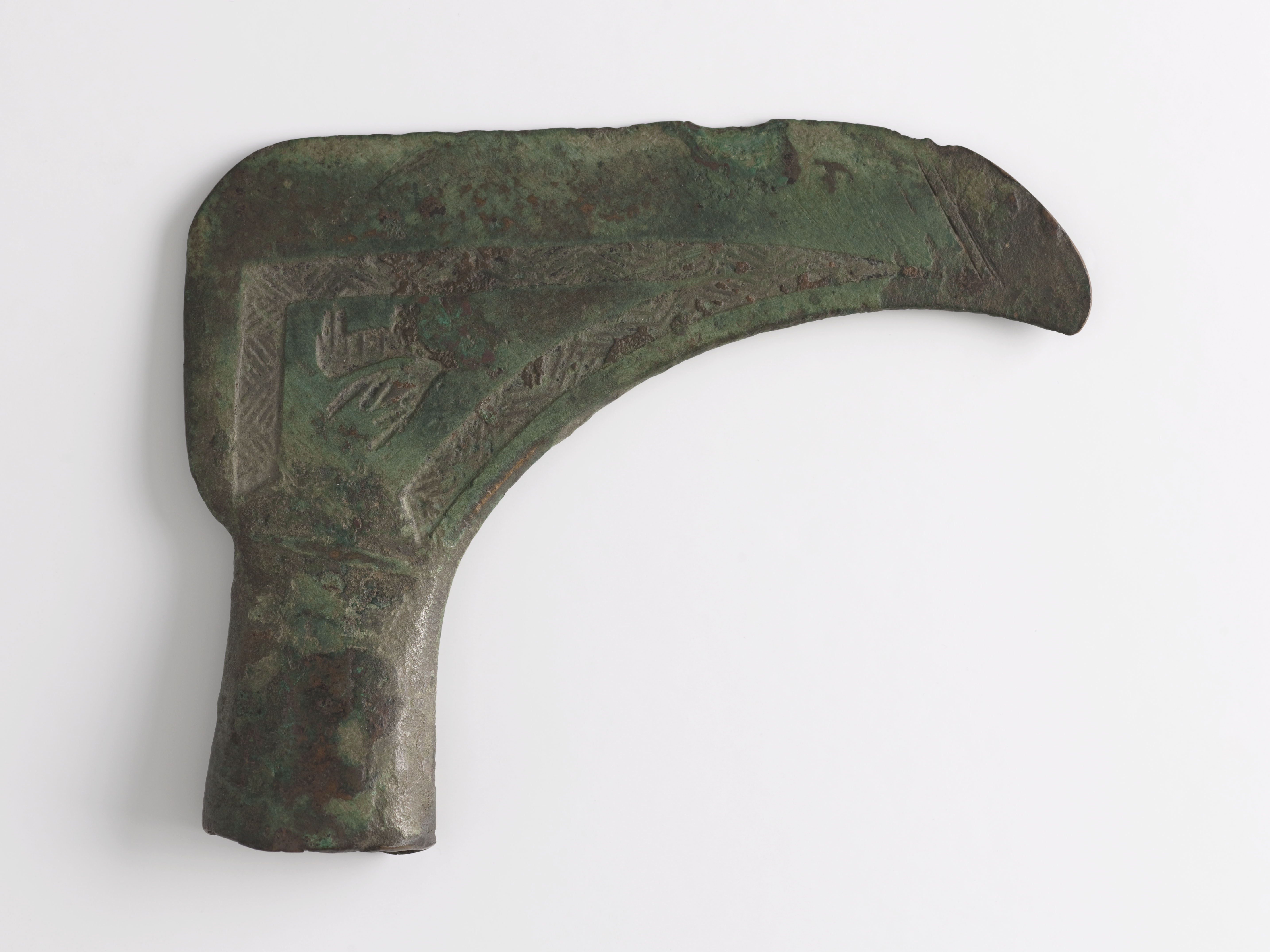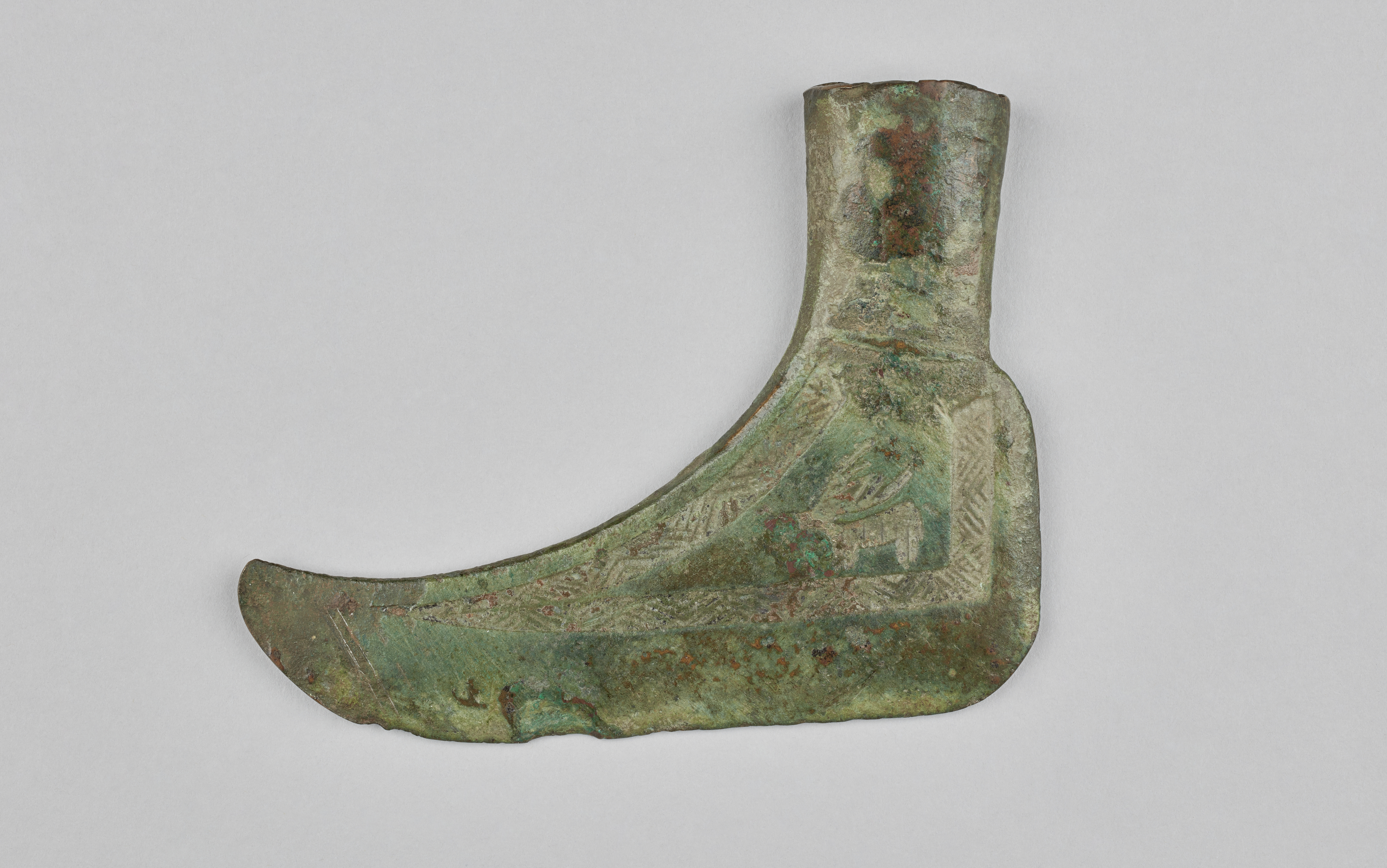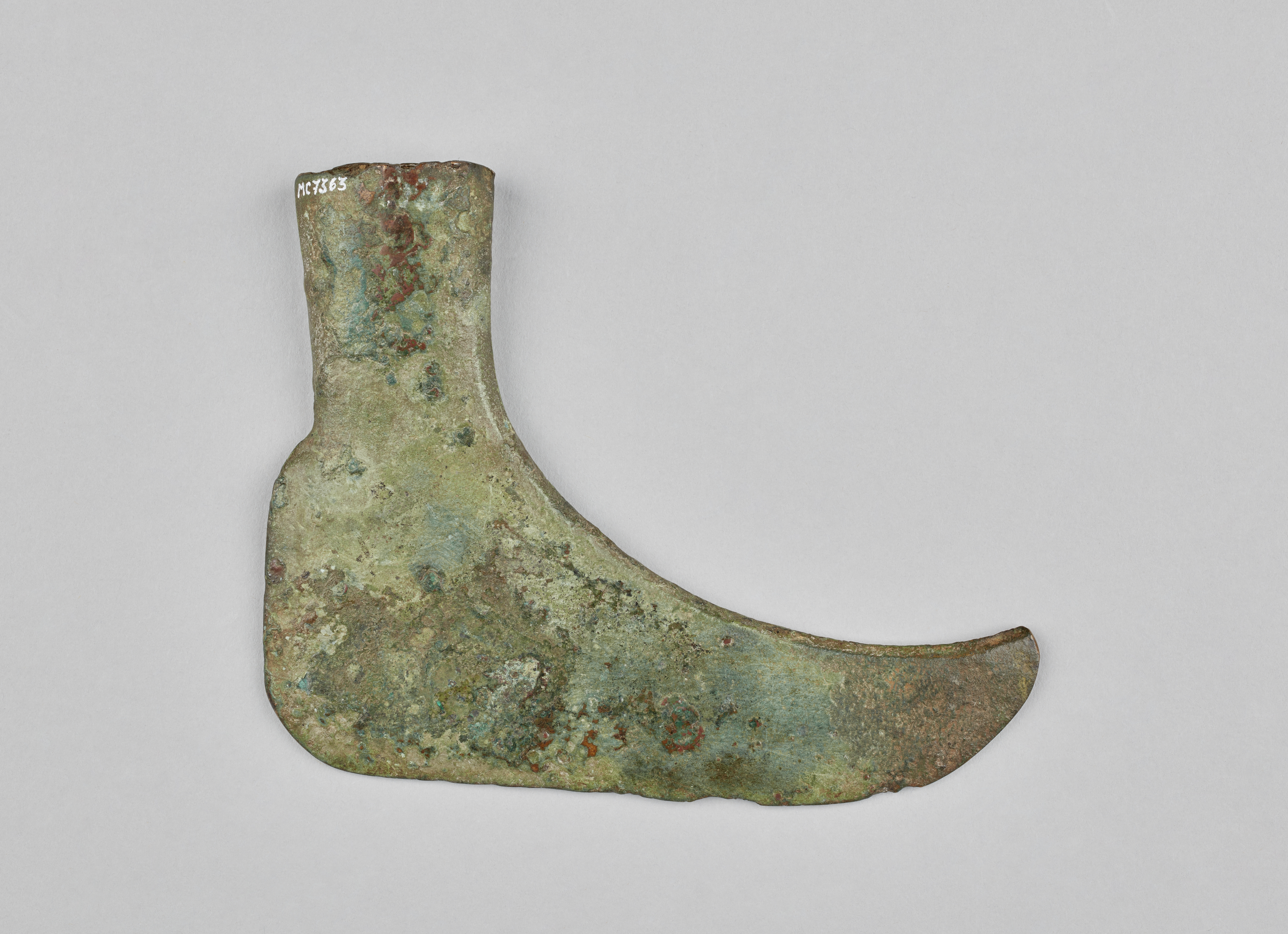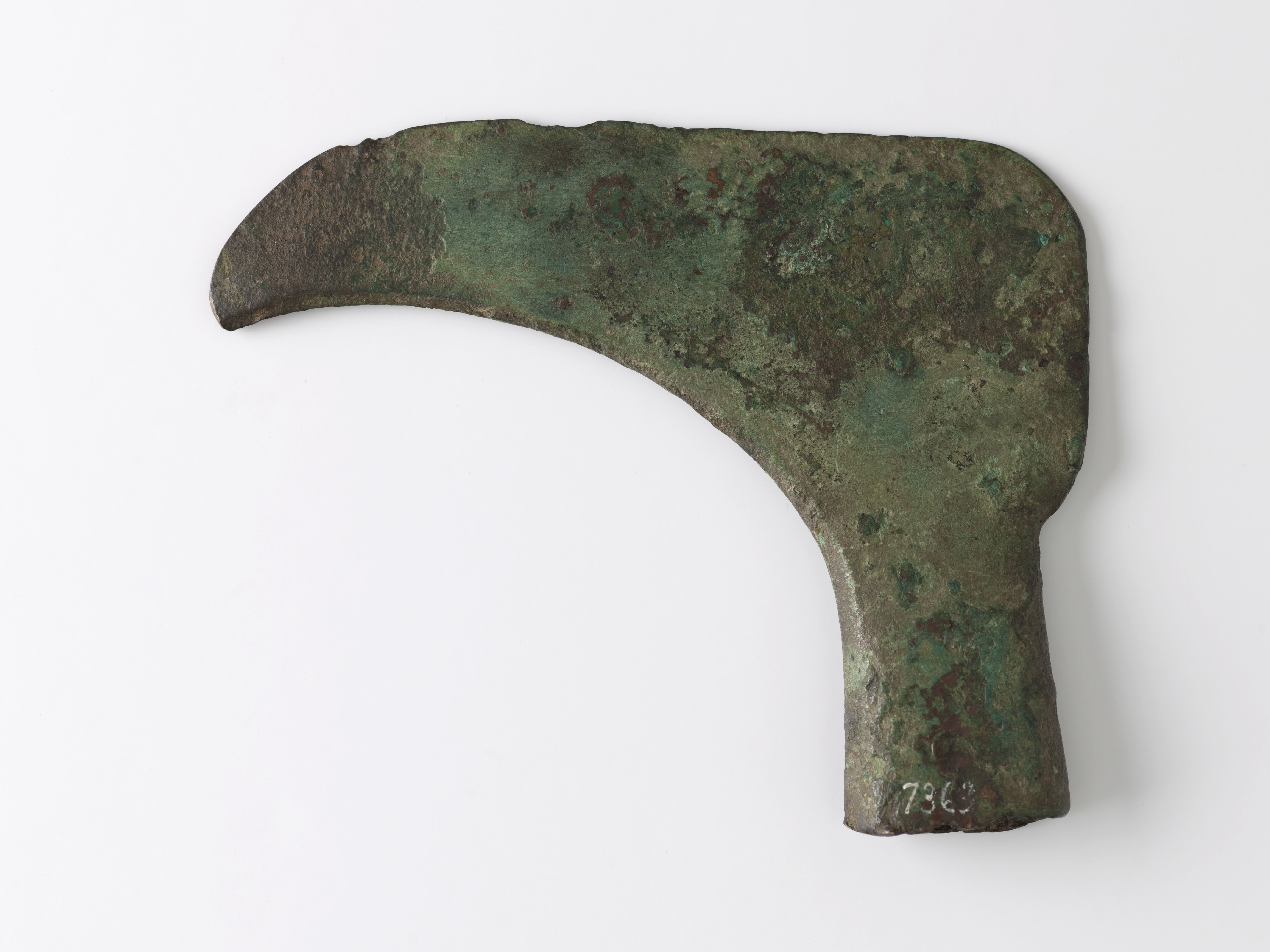
Lame de hache
Bronze
Arme
Achat
M.C. 7363
The foot-shaped axe, or rìu, is a weapon that is characteristic of the Đông Sơn civilisation. This type of object has been found in the tombs of high-ranking persons, which were richly furnished with bronze funerary equipment. A wooden haft was originally wedged into the axe’s socket. It was used in three different ways: to strike blows, to cut, when held like a billhook, and as a throwing weapon, since its curved shape enabled it to rotate. However, the finely wrought decor that is often found on this type of object and the very fact that a material as precious as bronze was placed in a grave suggests that this axe was a symbol of prestige, designed to be worn at the belt or else borne aloft like a standard.
The small deer decorating the Cernuschi Museum axe appears to have been of important symbolic or sacred significance, like the bird motif found on all the bronze drums. The top of certain large drums are decorated with friezes of small deer between concentric bands depicting birds in flight or circled dots connected by tangents.
Louis Bezacier, Le Viêt-Nam de la préhistoire à la fin de l’occupation chinoise, Manuel d’archéologie d’Extrême-Orient. 1ère partie : Asie du Sud-Est, tome 2, fasc. 1, Editions A. et J. Picard, Paris, 1972, pp. 129-143.
Cổ Vật Việt Nam, Vietnamese Antiquities (multiple authors), National Museum of Vietnamese History, Hanoi, 2003, pp. 69-71.
Pierre Baptiste, L’envol du dragon – Art royal du Vietnam, coedition Musée national des arts asiatiques ― Guimet and Éditions Snoeck, 2014, p. 20.
